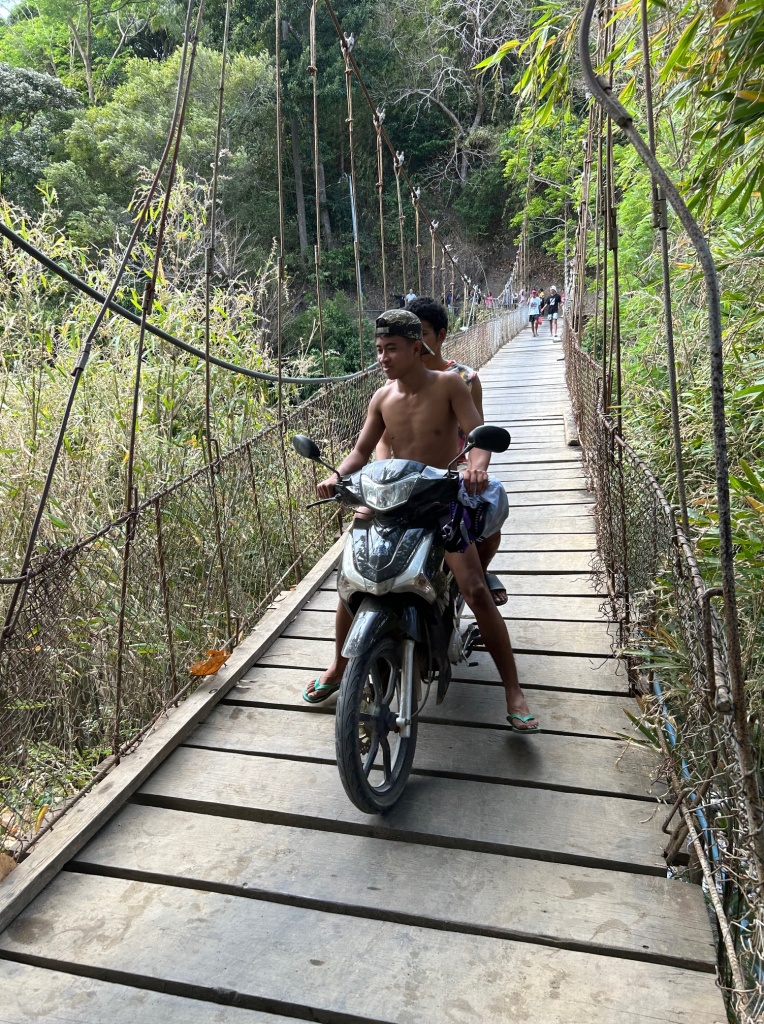It is March 11. Two days ago, Lina and I, Edna and Nani and a group of friends visited Kanawan again.
I suggest you read this article, written in the fall of 2013, for background on Kanawan and Lina’s long involvement there. You’ll see some photos which you can compare to the long photo gallery coming up in this post. Much has changed, and much looks as it did years ago.
Our group prepares to leave the seashore to drive up to the village of Kanawan. The folks in back were staff for the Philippine Baptist Refugee Ministries who worked in the Philippine Refugee Processing Center.
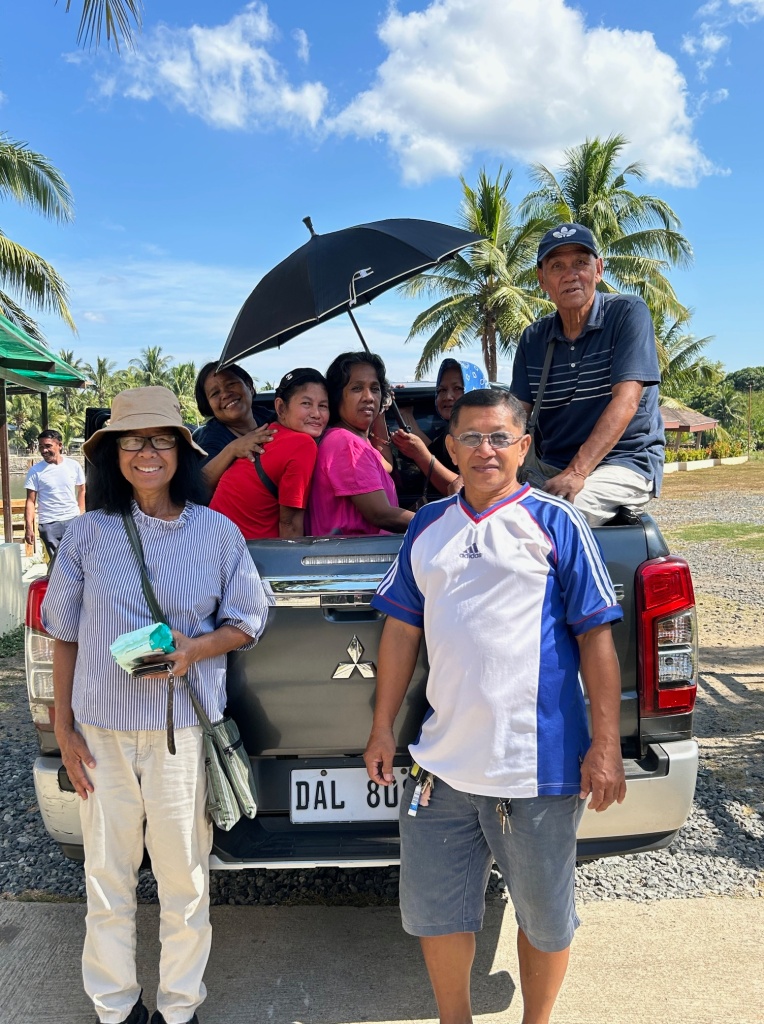
As we neared the village, a group of little boys burst from the banana groves on the side of the road and dashed up the road at astounding speed. We don’t know what they were running from!
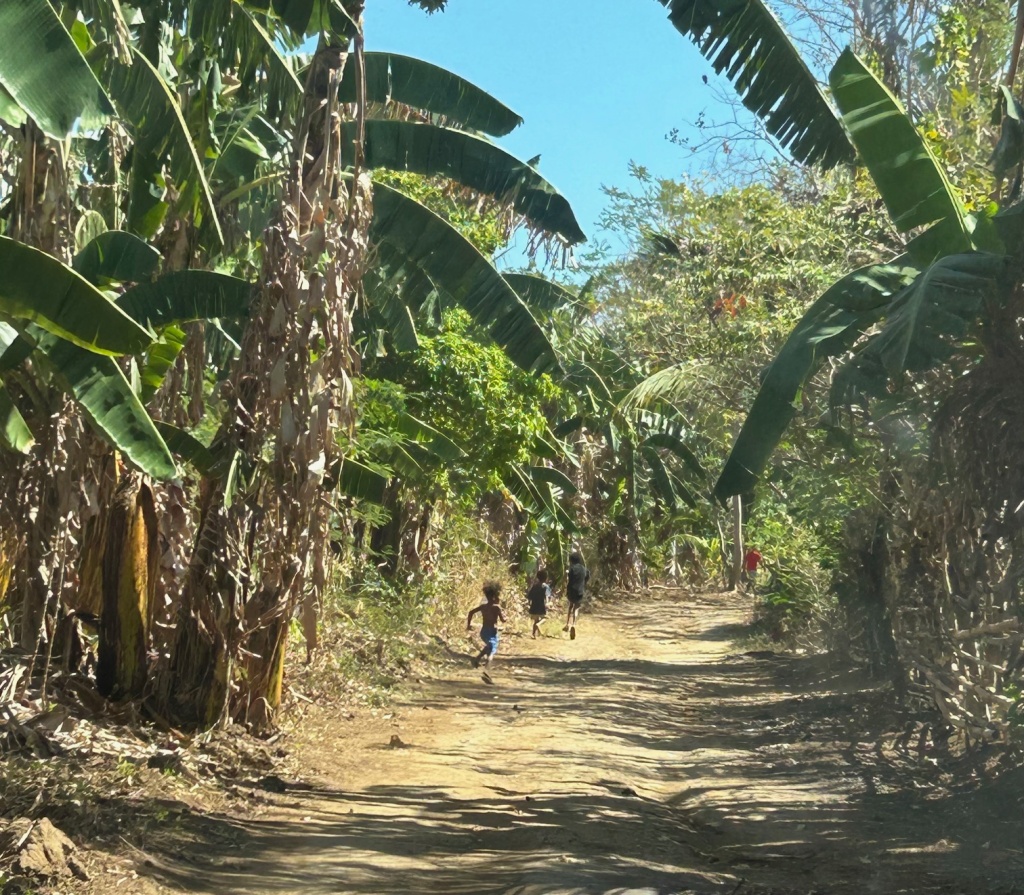
Kanawan village has grown from about 35 families back in the 1980s to a population of 700 registered voters. The residents have built many new houses, but the center of the village is still shaded and quiet.
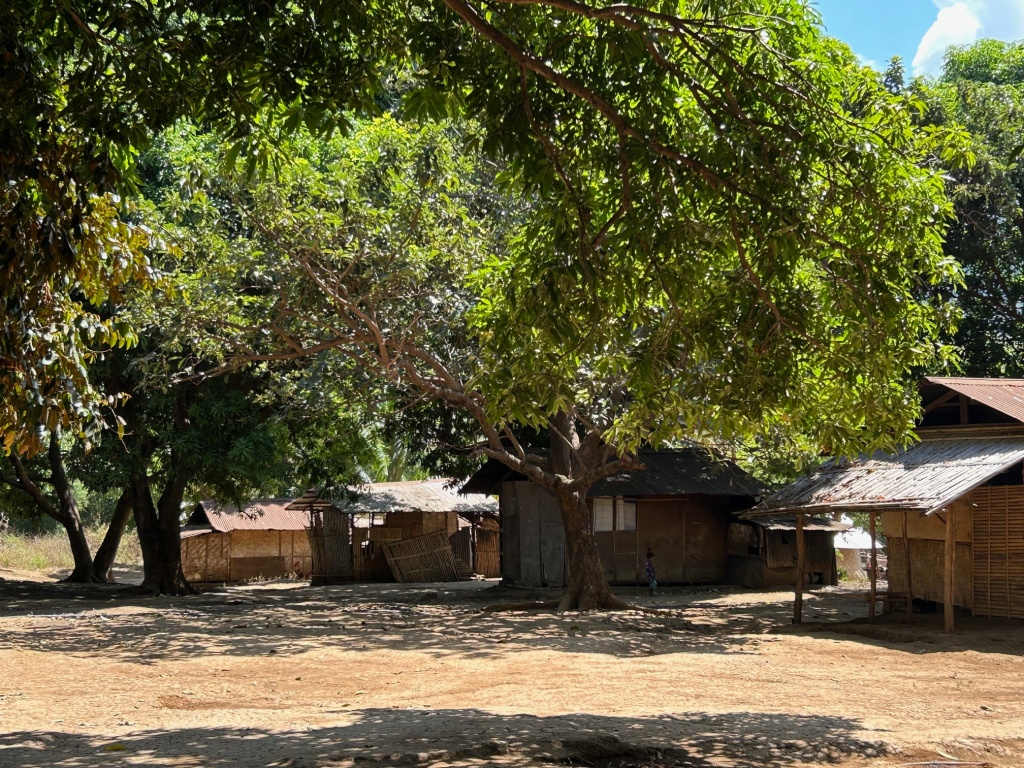
Lina has three generations of Kanawan friends
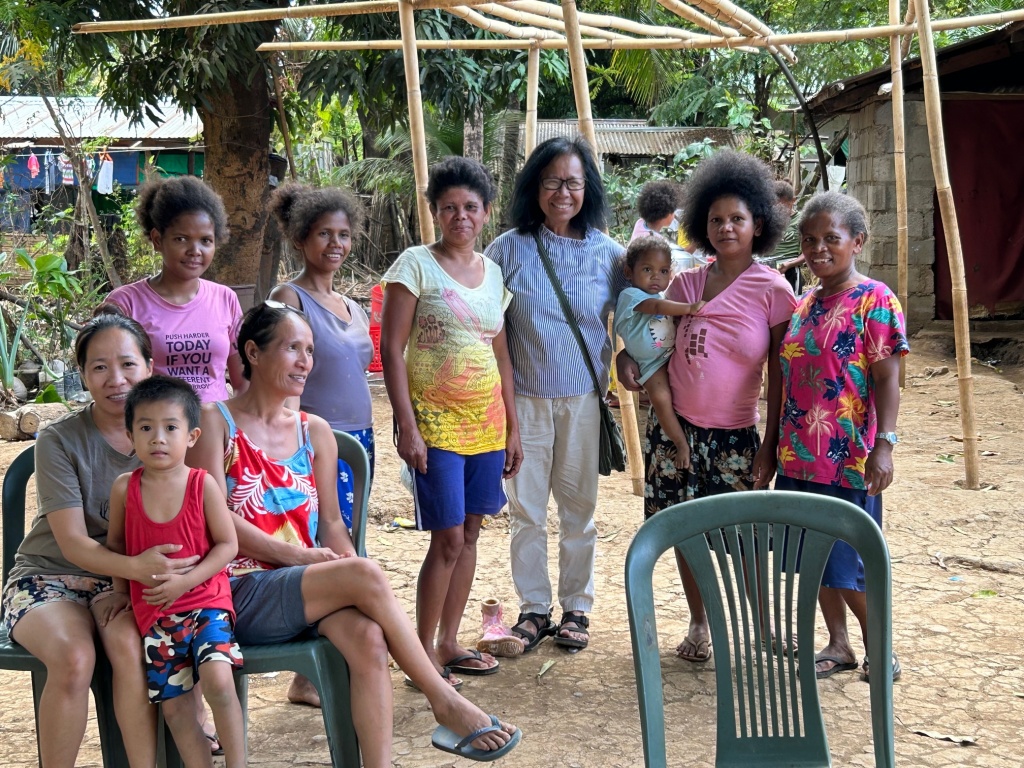
including Birgit (named after our German nurse friend who worked here) and her baby. Lina poses below with Birgit’s parents, Birgit and child.
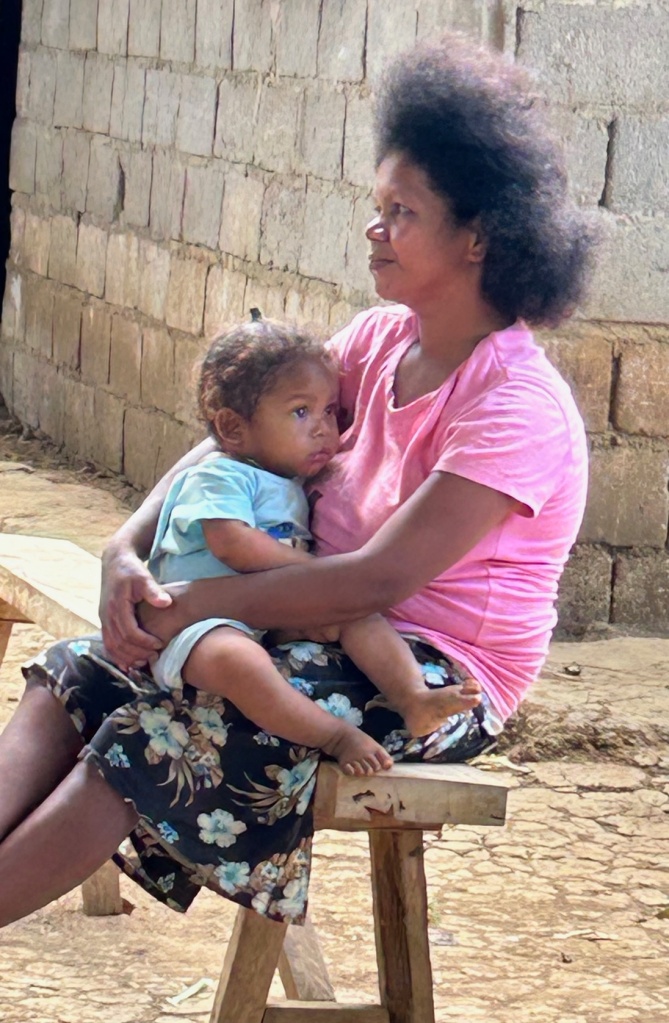
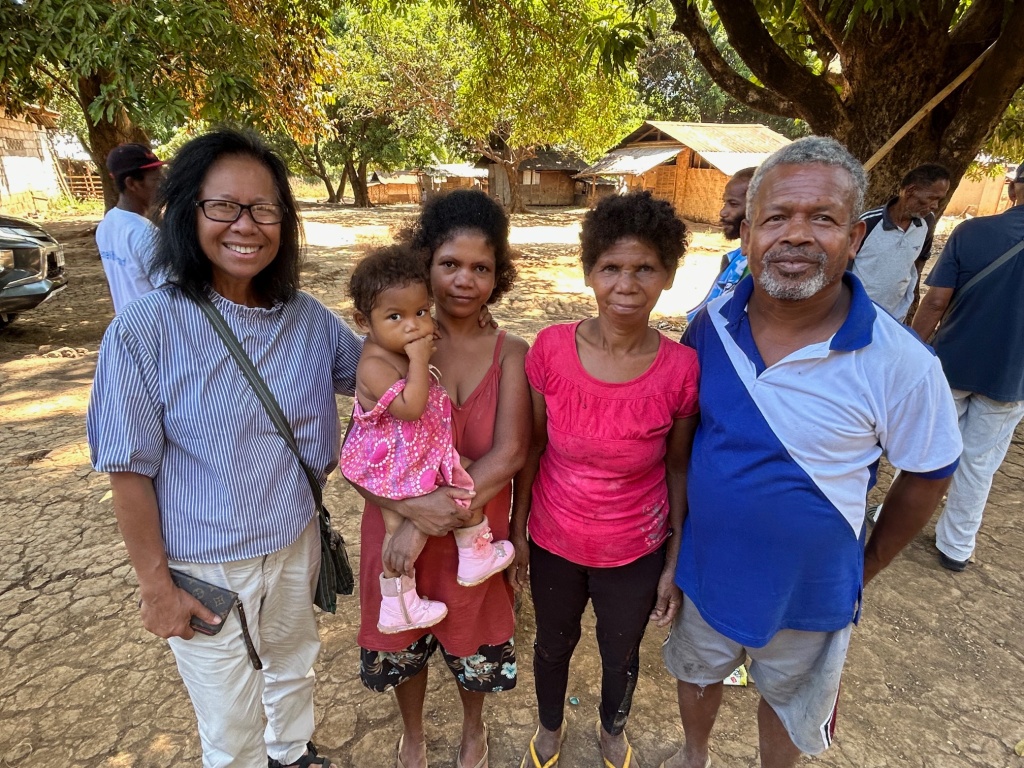
One obvious change is the advent of the cell phone.
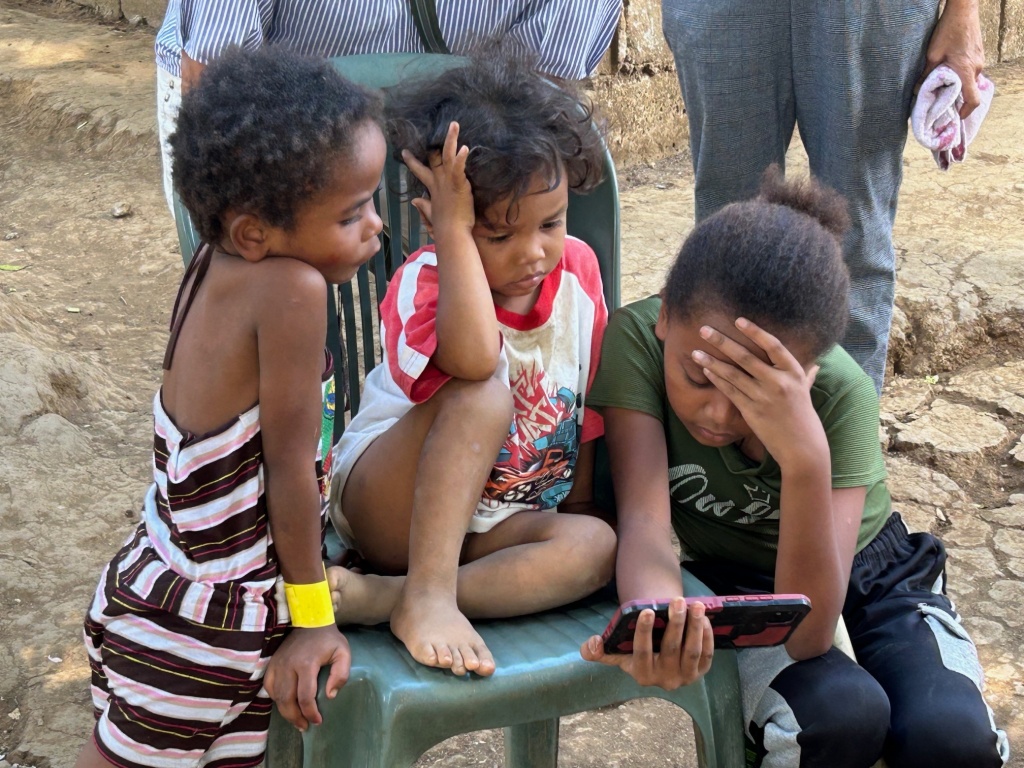
This little boy is digging a hole with great energy. I’m sure other children still play the games we’ve photographed before, with pebbles and flip flops.

Pastor Domulot took me, Lina and Edith to see a farm below the village. Along the path we met these girls who’d been gathering cashew nuts.
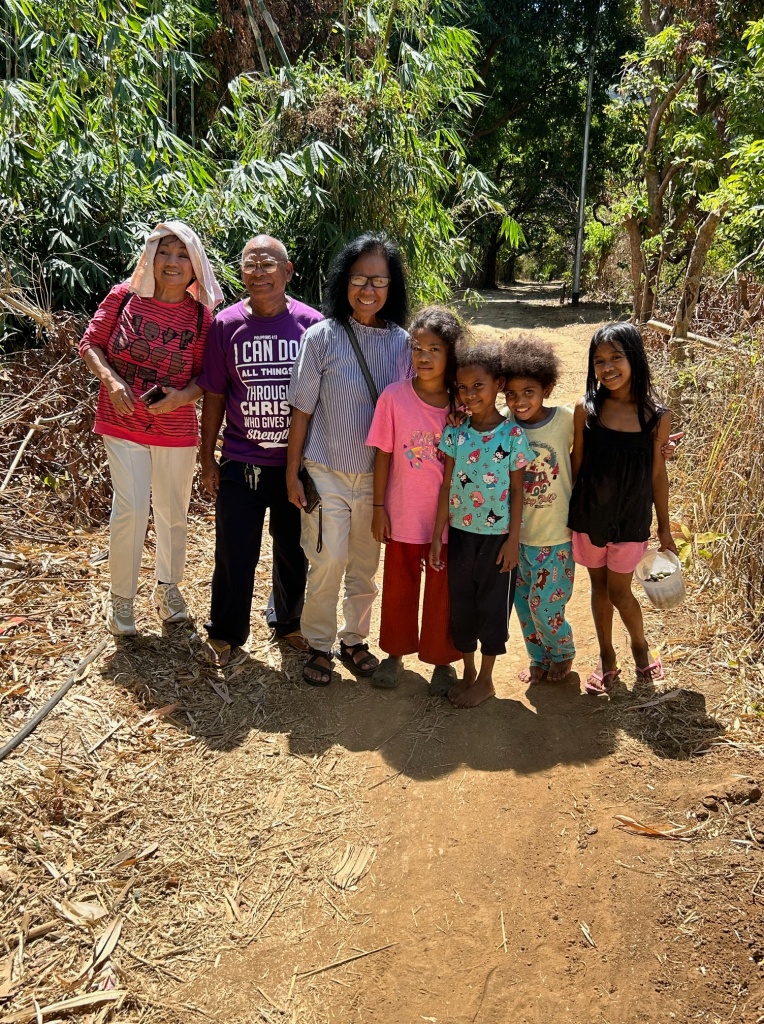
They had discarded the overripe fruits, which perfumed the air with a pleasant sweetness.
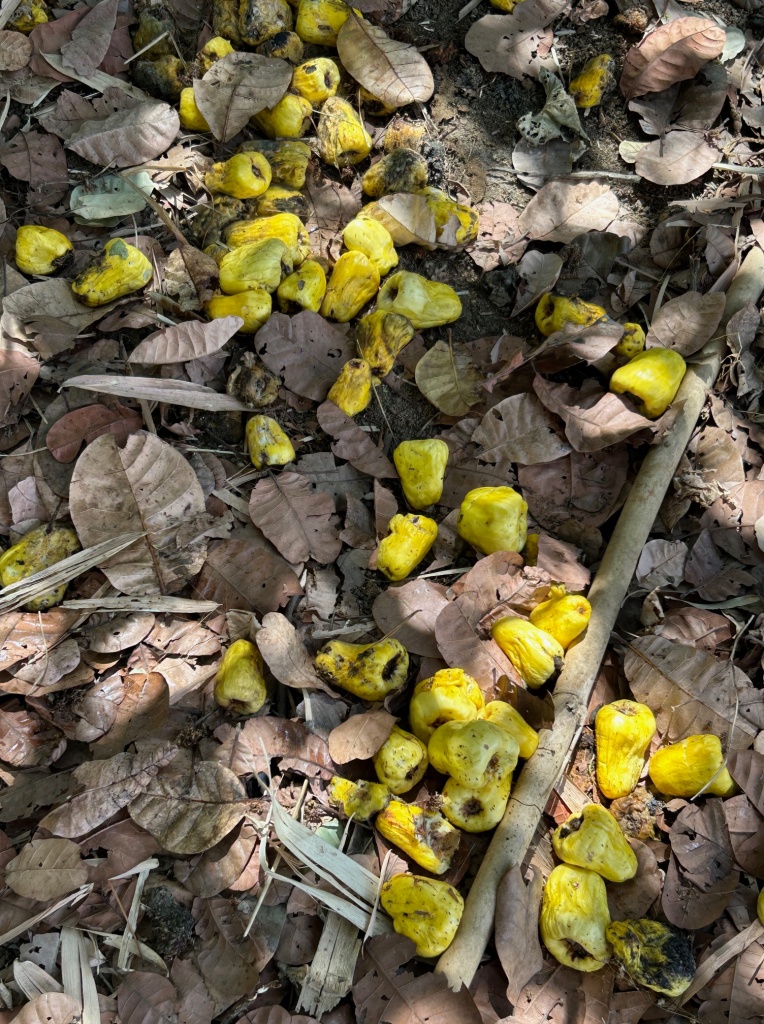
Here’s a cashew nut growing at the end of a very young fruit, and
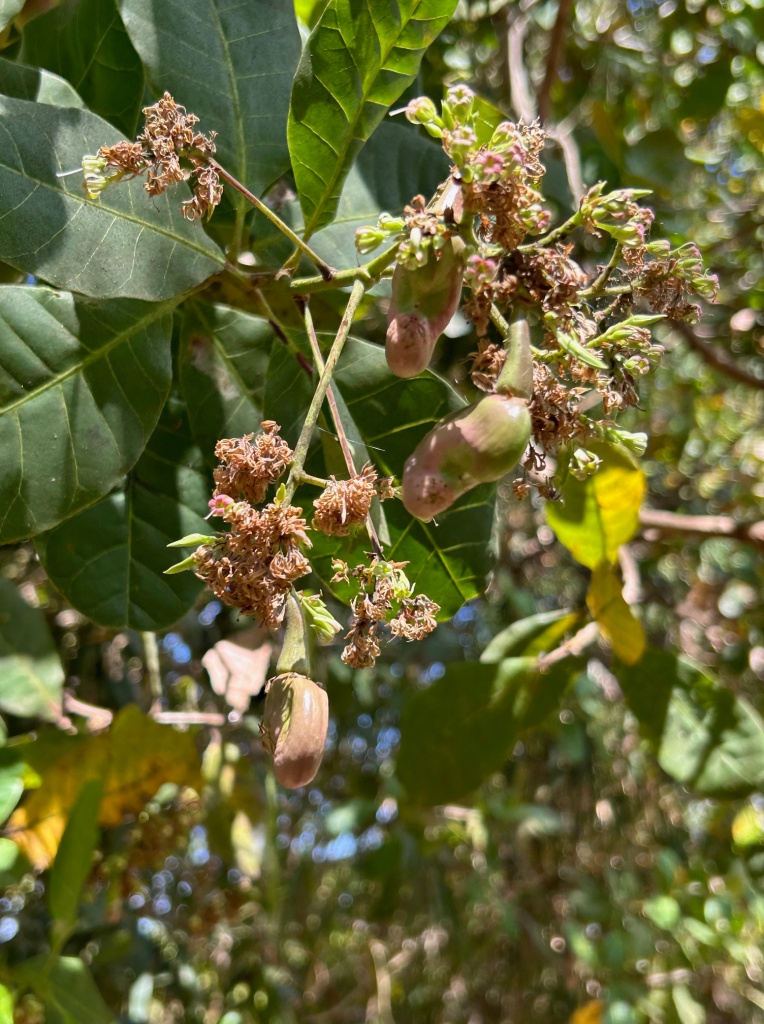
here are the mature fruit and nut. The fruits are delicious, I am told, but as cashew is closely related to poison ivy, I’ve never tried them. The nuts, when roasted, are safe to eat for most people allergic to poison ivy, as the roasting drives off the volatile oils that might cause a reaction.
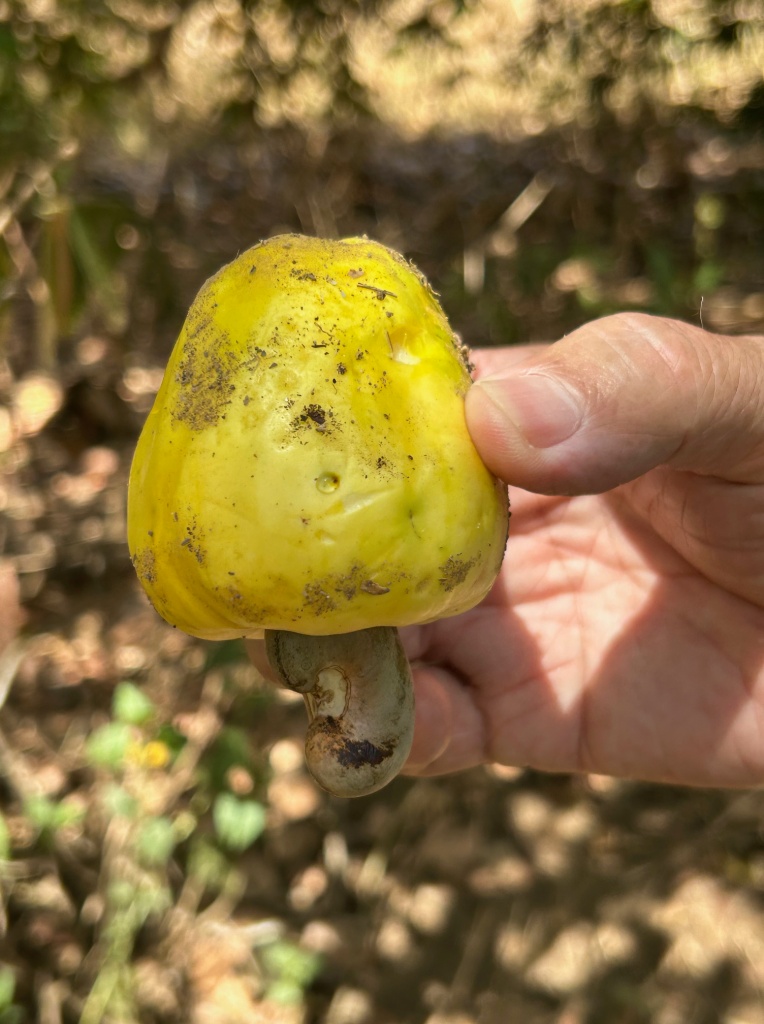
Pigs greeted us when we arrived at the farm.
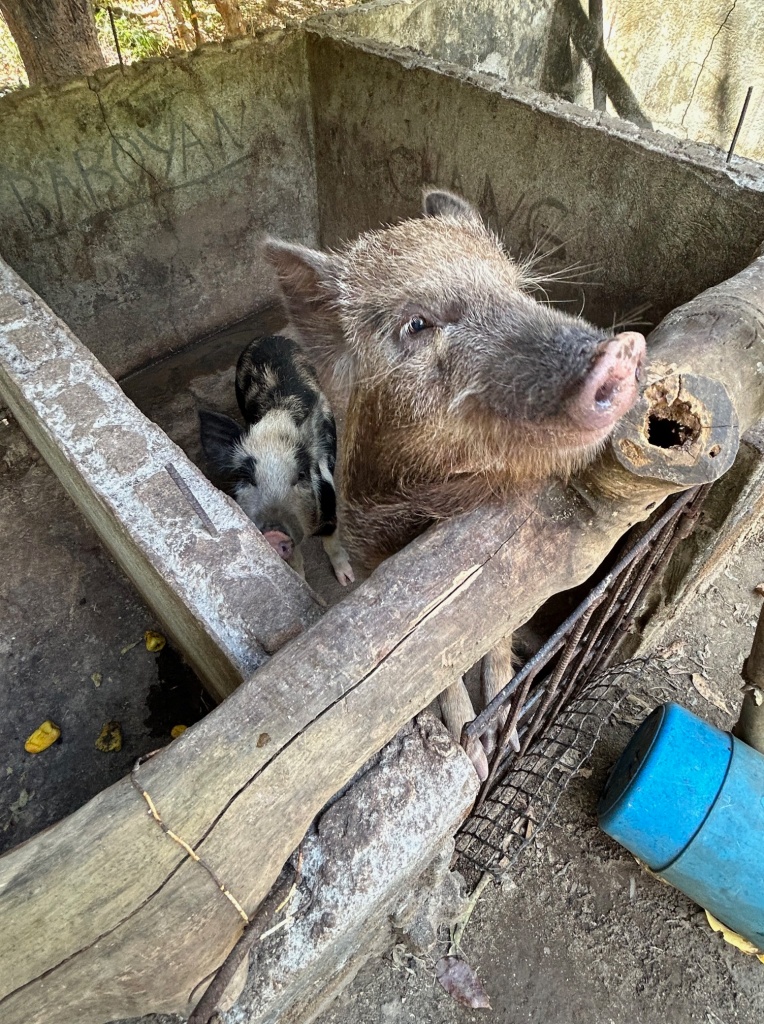
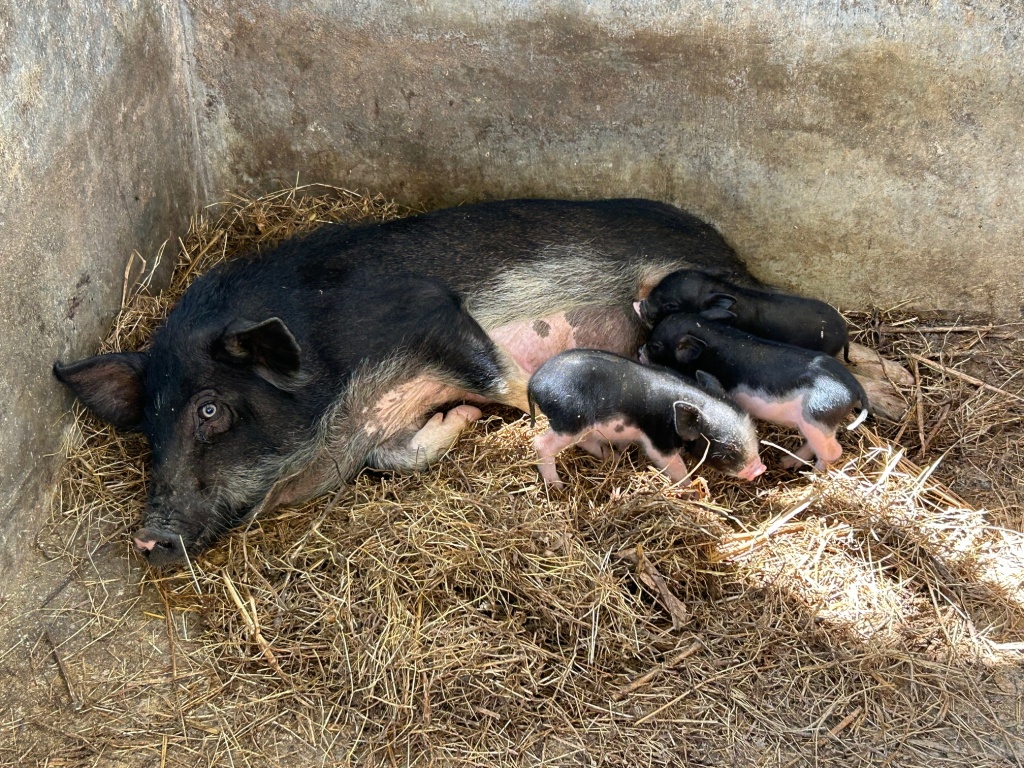
This very friendly little fellow could not get enough of having his head scratched. Notice his eyes are closed!
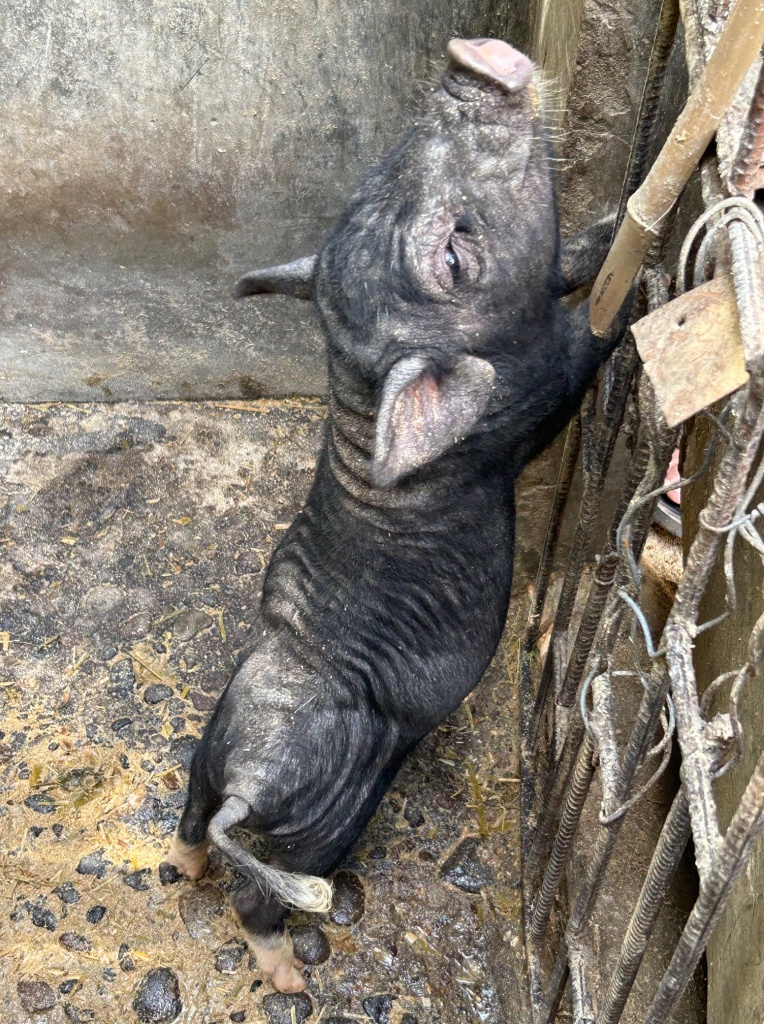
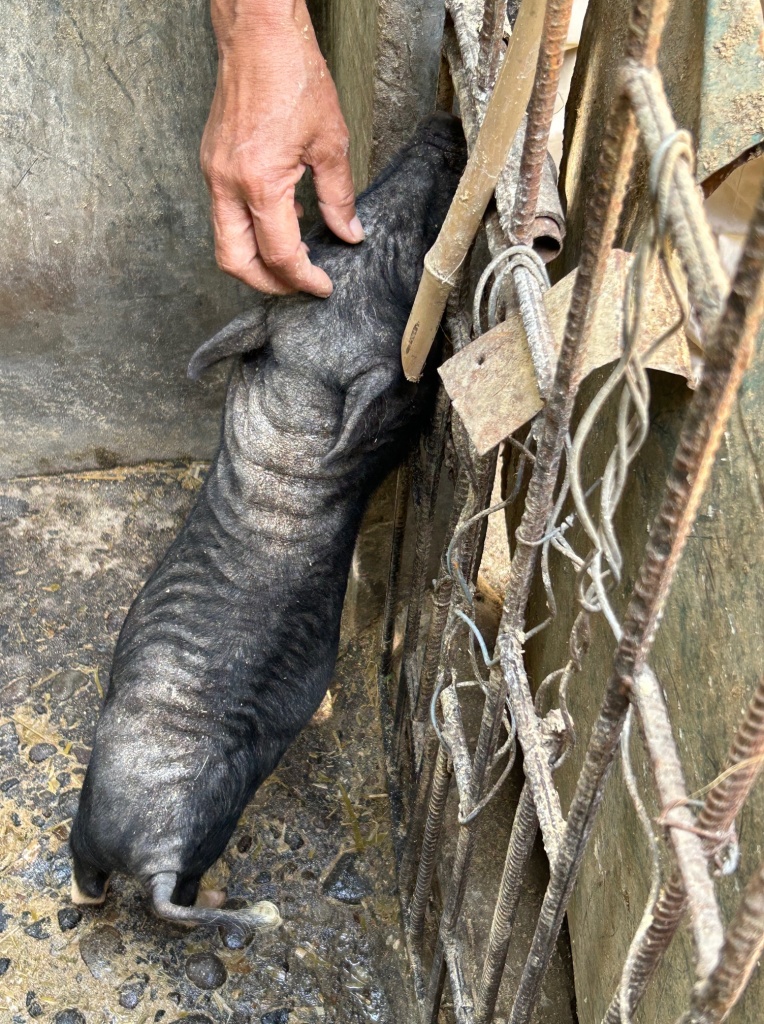
Pastor Domulot shows us the feed that he makes for the pigs. He grinds up napier grass, the leaves of kakawate and malunggay or Moringa (both sources of nitrogen), banana trunks (high in potassium), rice bran, tubers like cassava and more. This nutritious mixture ferments in large barrels.
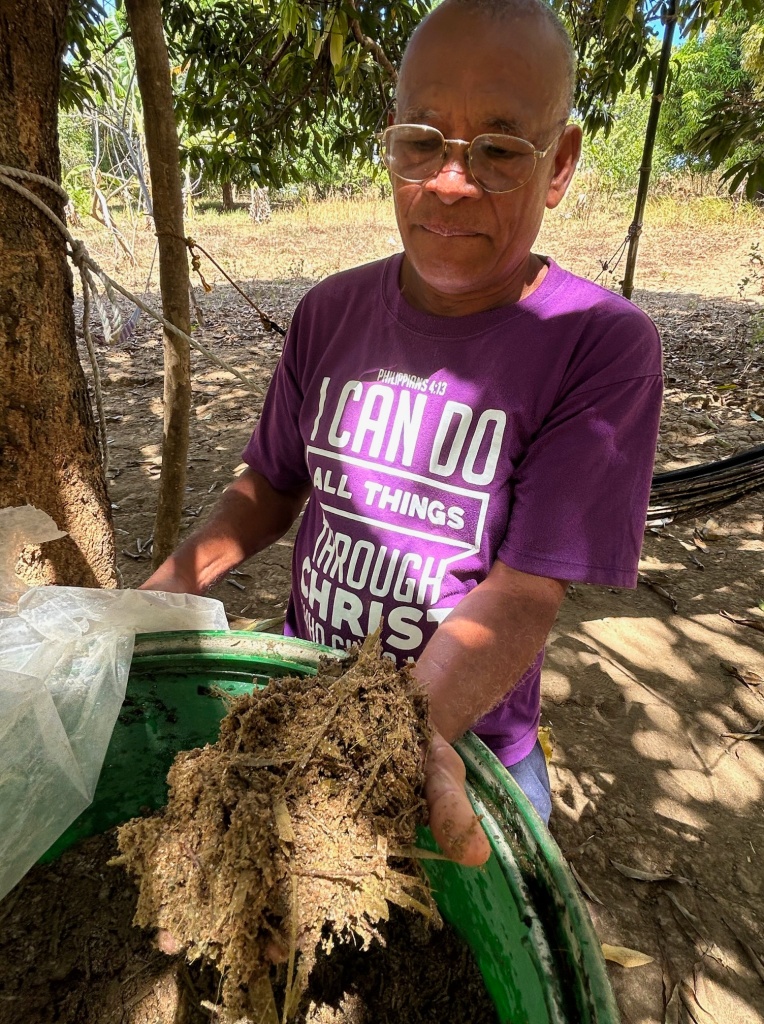
It smells sweet!
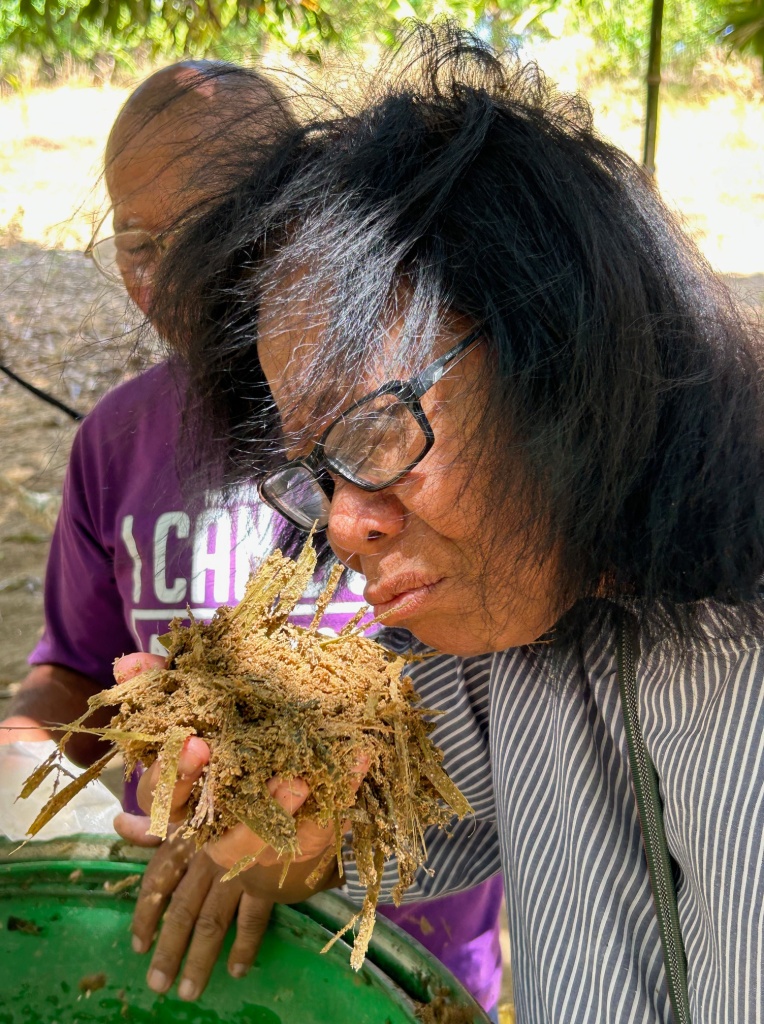
His nephew fabricated the grinder, run on diesel, to make the feed.

Chickens, turkeys and tilapia (in the fish pond) live on this tiny farm.
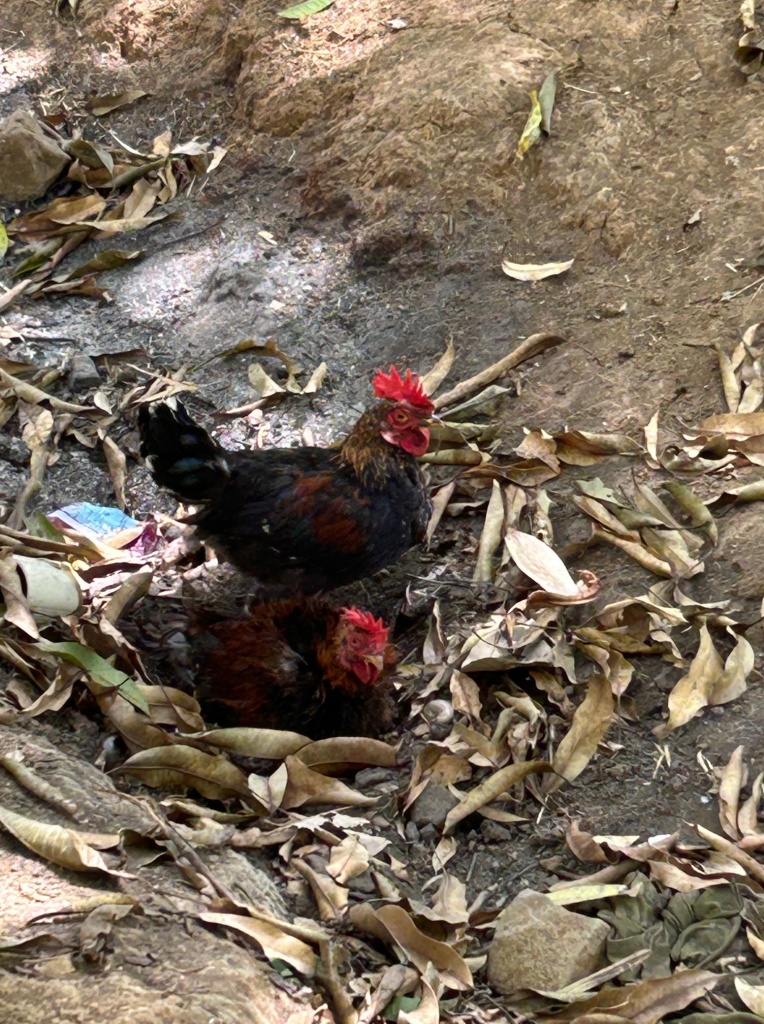
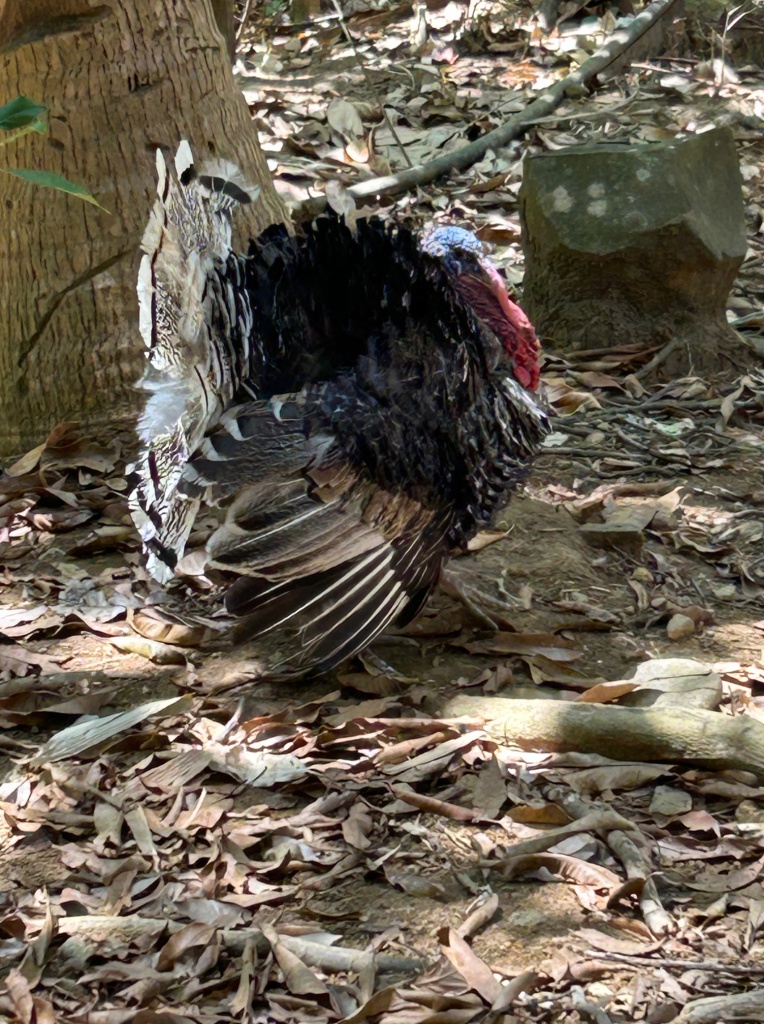
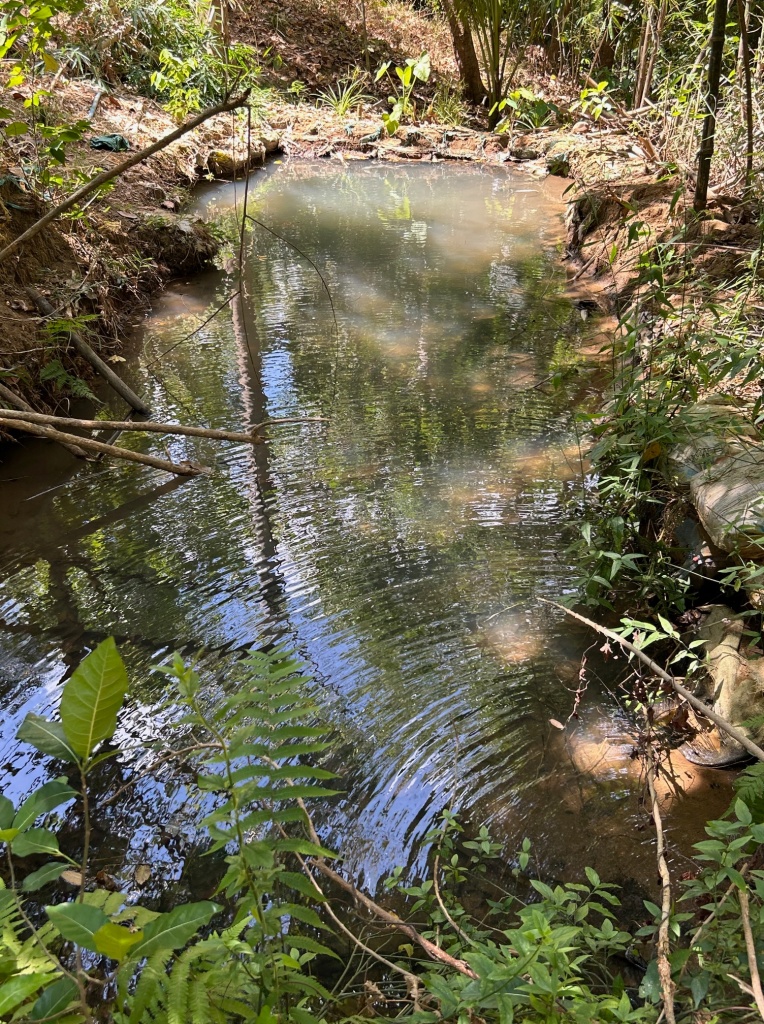
Beautiful mango trees grow in Kanawan and, some years, yield lots of fruit.

Small pineapples show the same spirals that I showed you in a photo from Tablas. [See https://orionblair.wordpress.com/2024/03/01/san-agustin/]
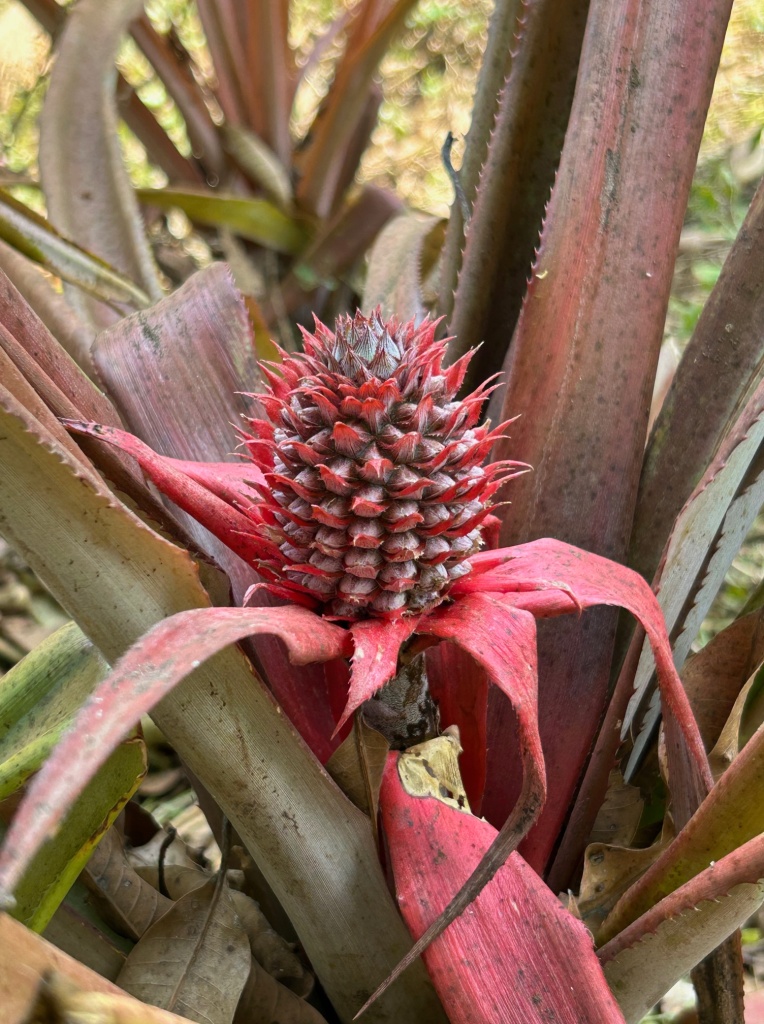
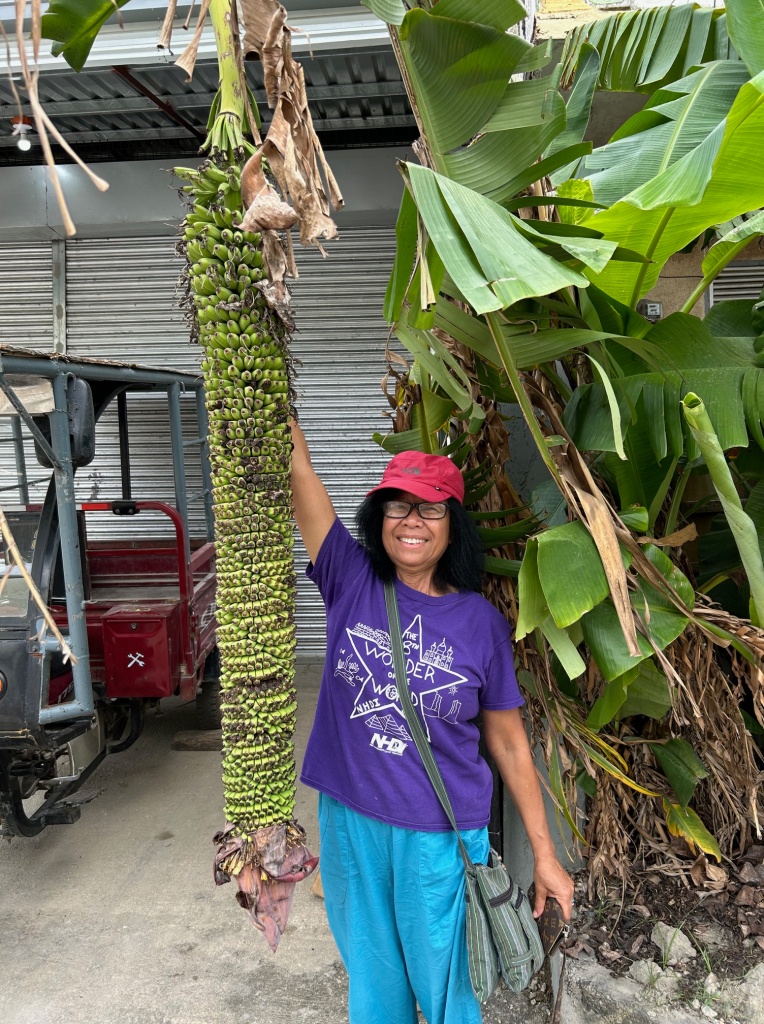
Pastor Domulot will put compost in the bottom of these holes before the rains arrive, and then he’ll plant talong (eggplant) and other vegetables.
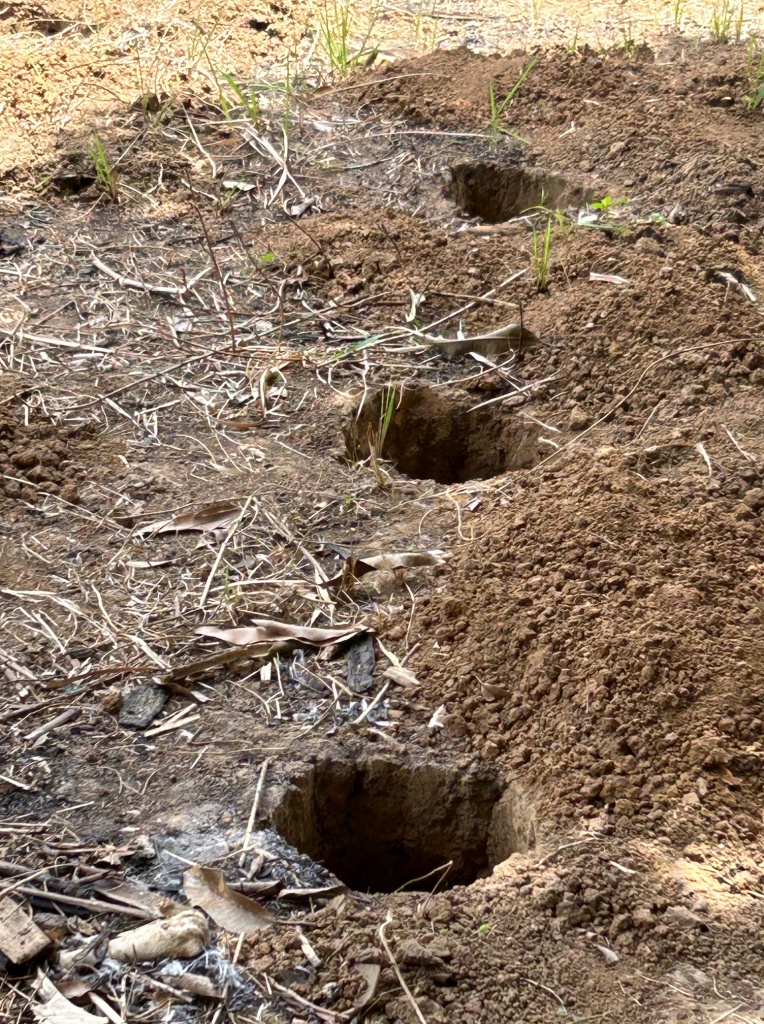
His nephew Larry lives in a small nipa hut with his wife and daughter. He too is a pastor.

Dogs relax in the shade.
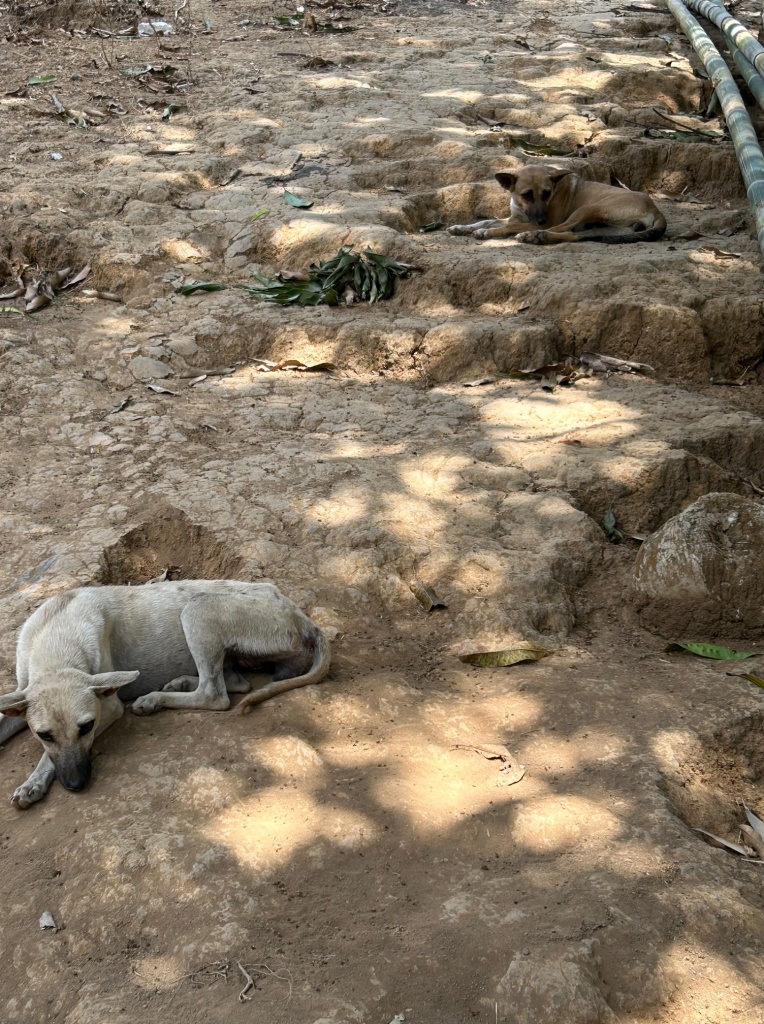
Three men were headed into the forest to harvest honey. They will place the honeycomb in this ingeniously made container that combines traditional basketry with the blessings of modern plastic!

We ate a delicious lunch at a sturdy bamboo table.
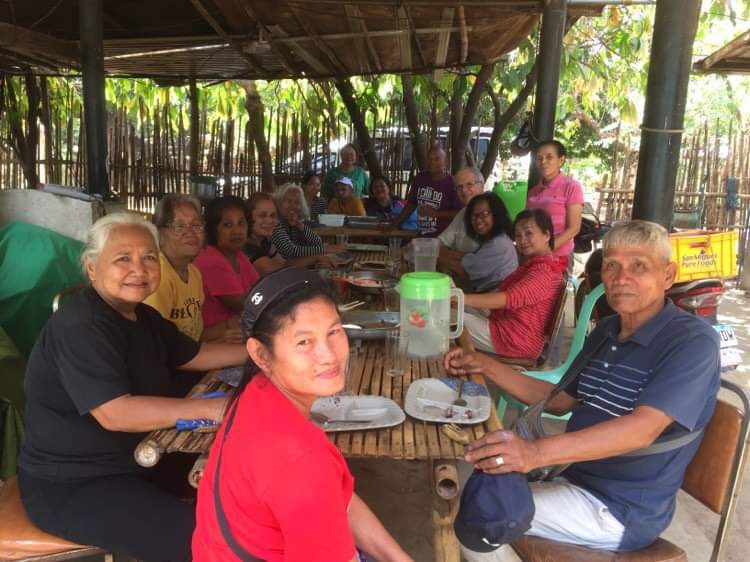
I was touched and amused to see the pastor’s name scratched into the bamboo!
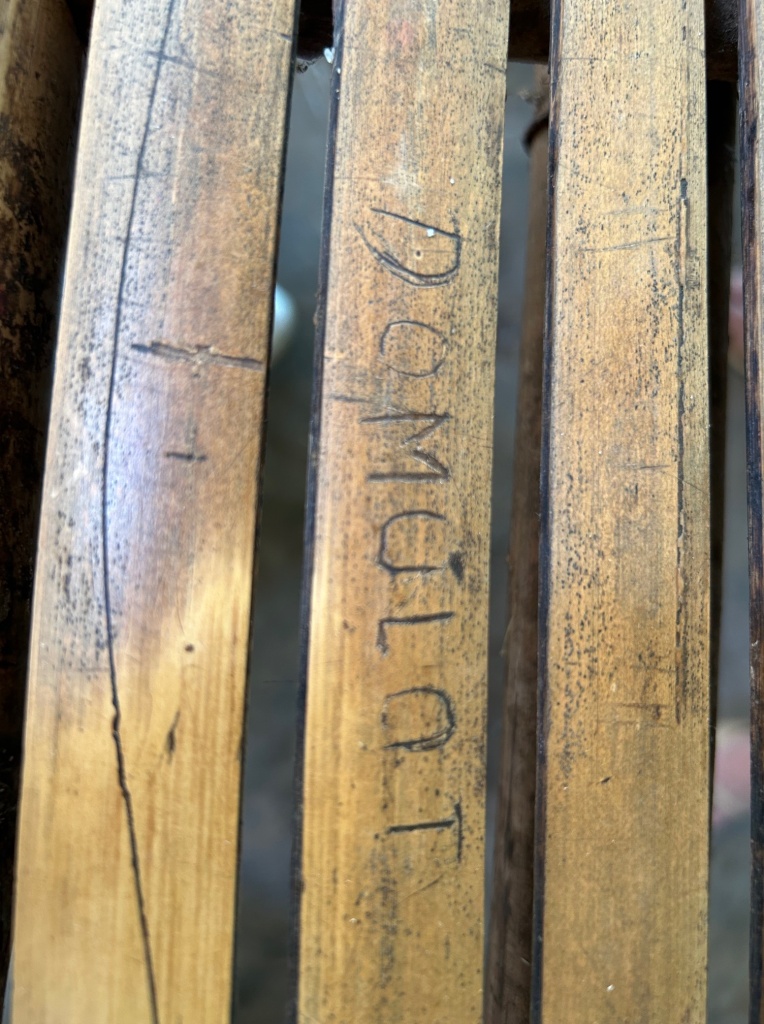
Here’s the school today. It has been upgraded since 2005. You can compare an old photo in the post from 2013.
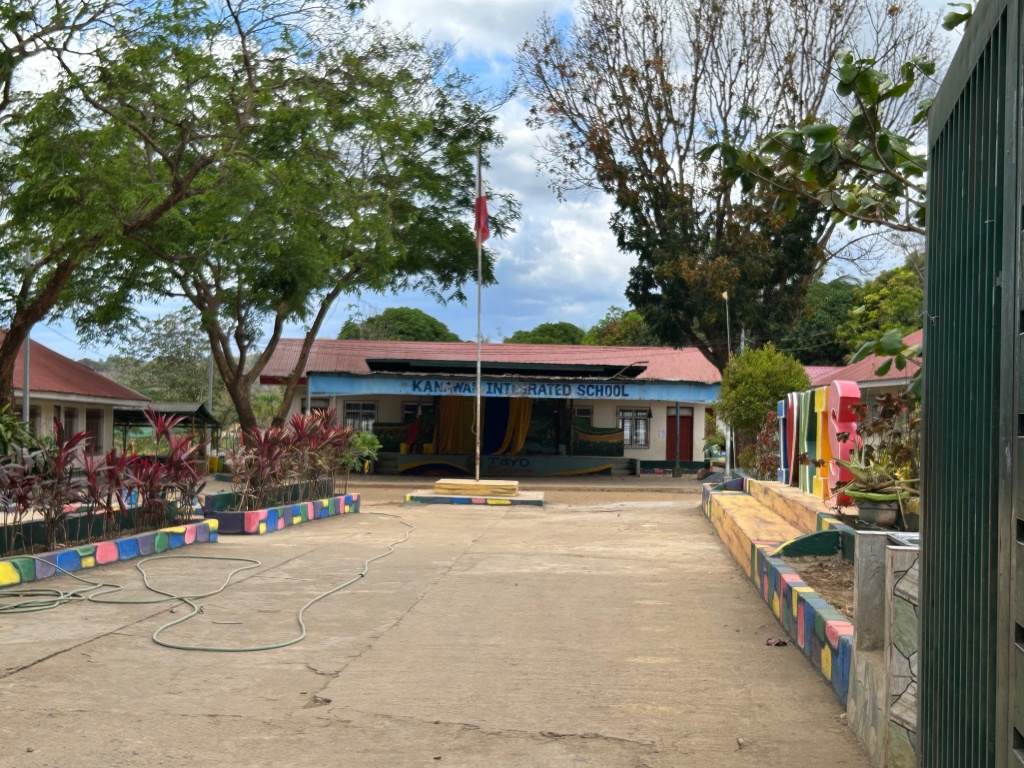
The hanging bridge still swings above the river.
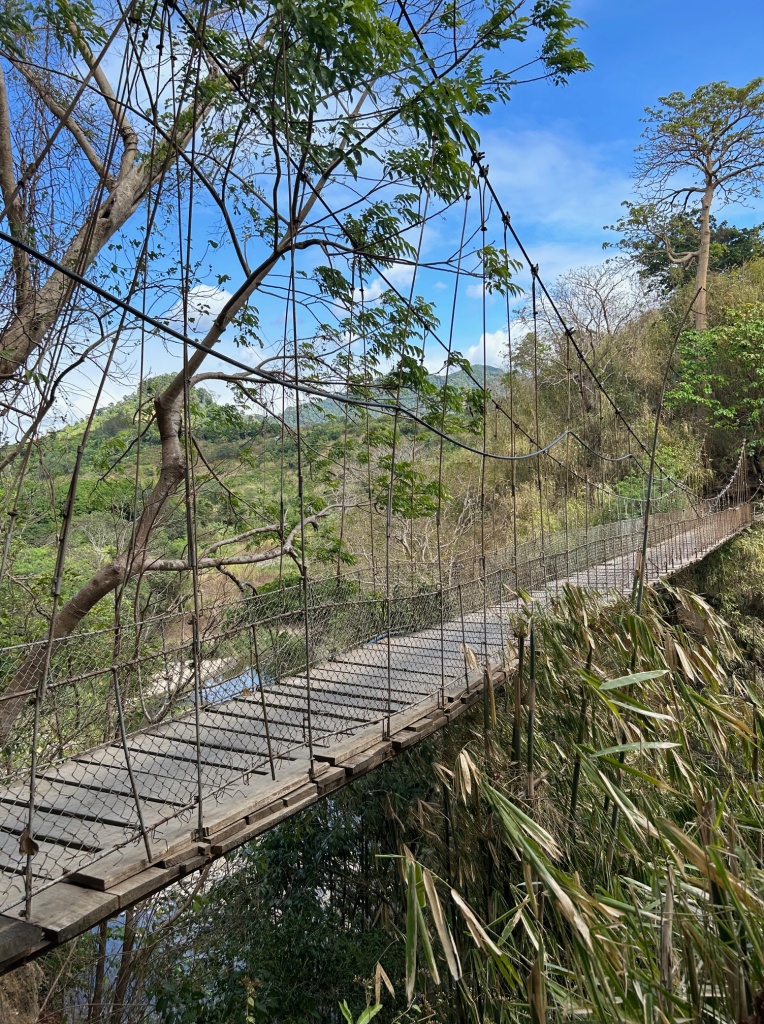
Up from the bridge, a bamboo arch welcomes visitors to Kanawan.
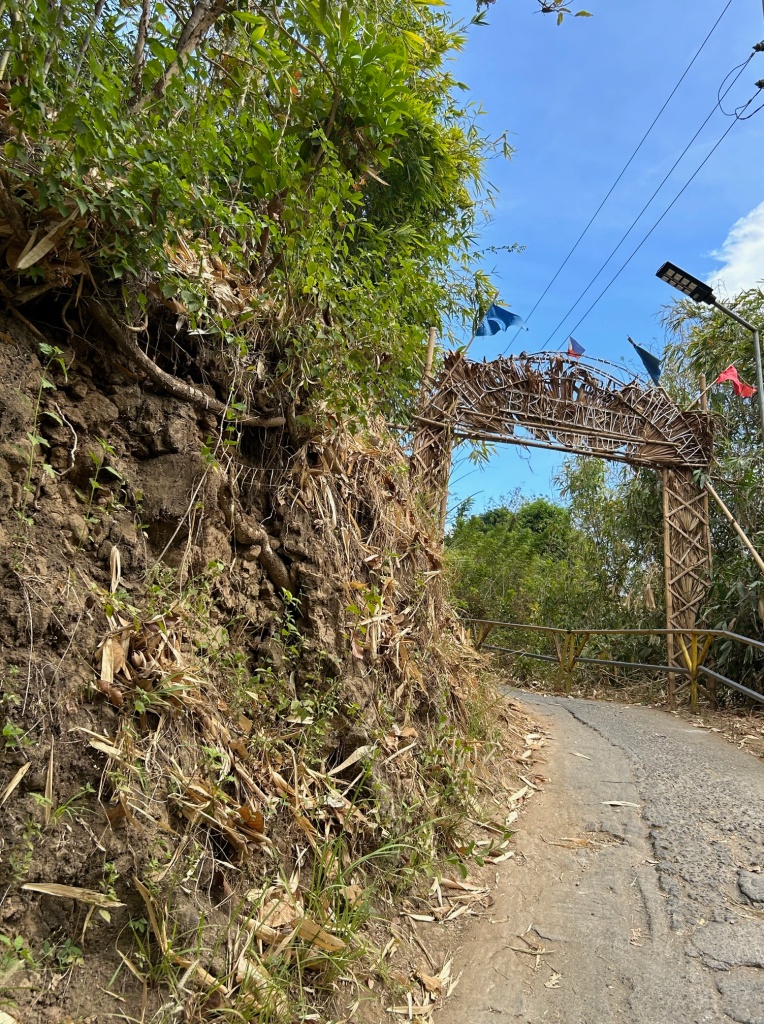
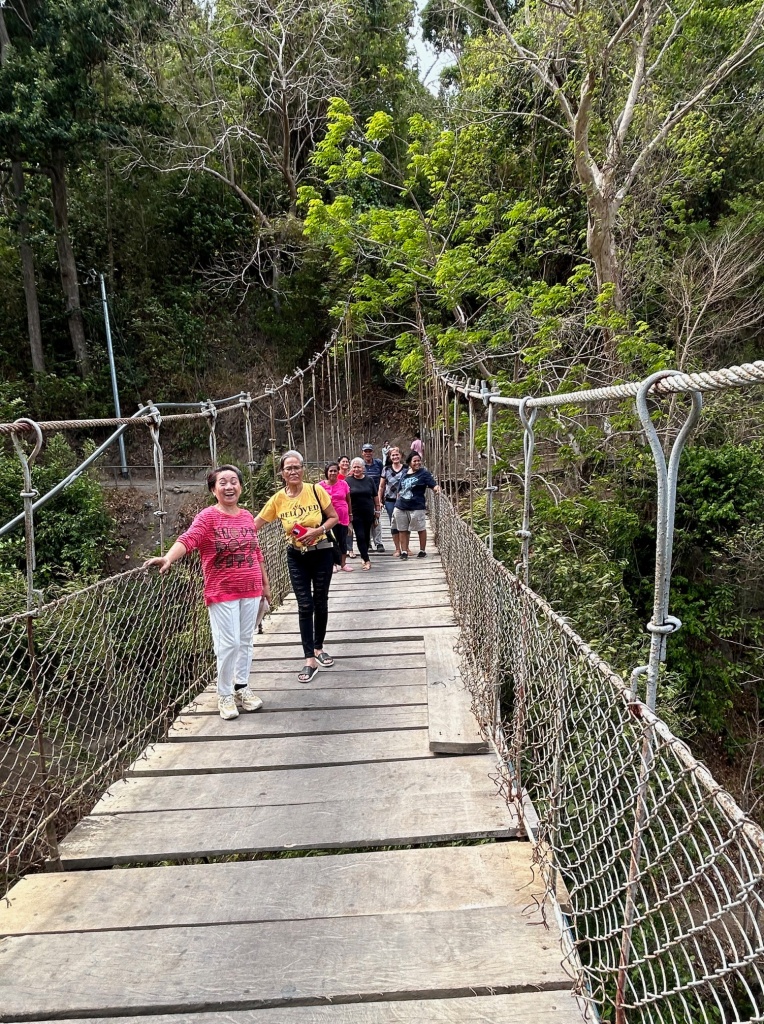
The water is very low. Families picnic on the sand bars and, up to the left, small stone dikes have been built to create swimming pools.
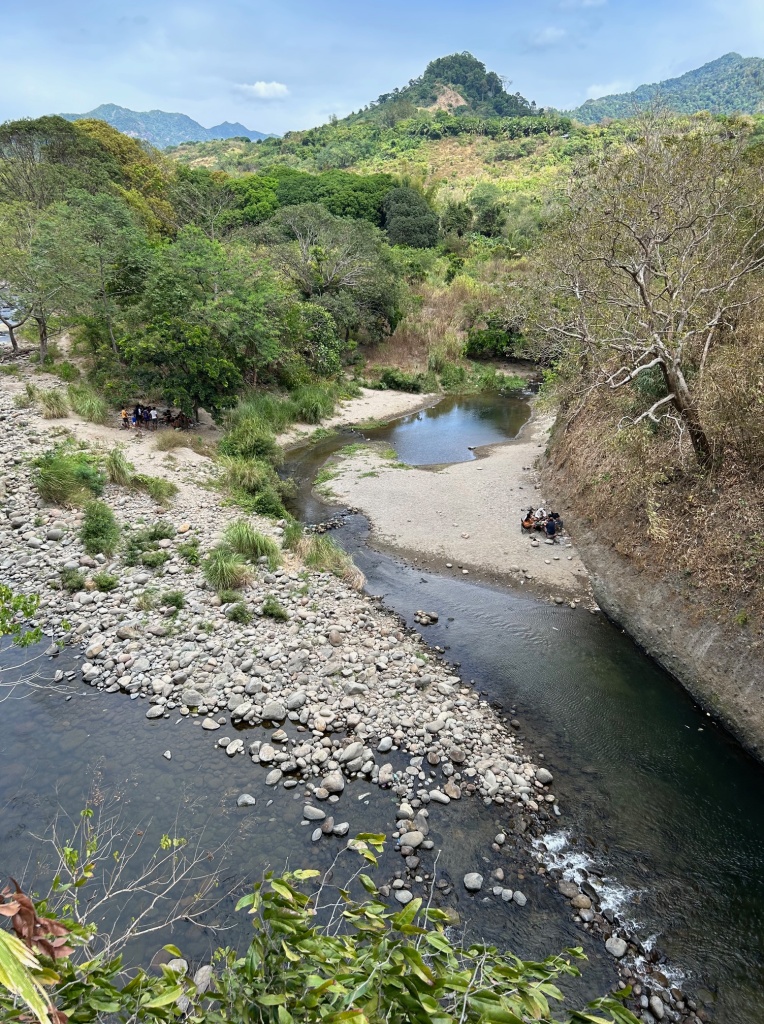
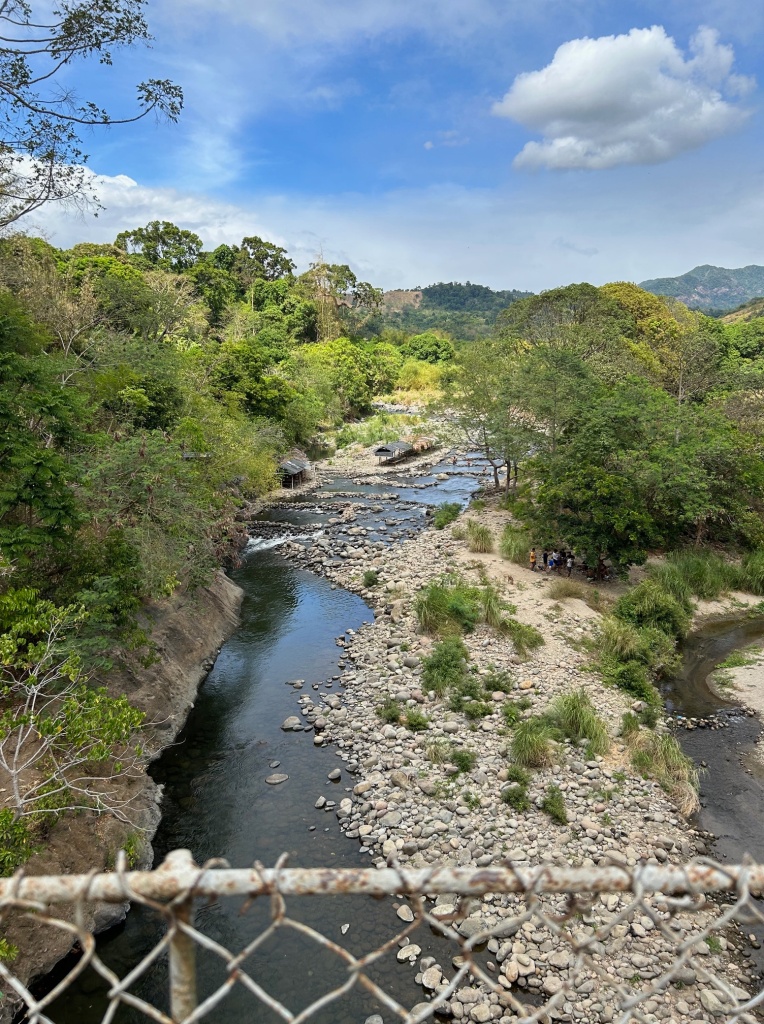
I used to swim above the dam, where the water is deeper and, in rainy season, swift. It was delightful. Also home to dark freshwater shrimp.
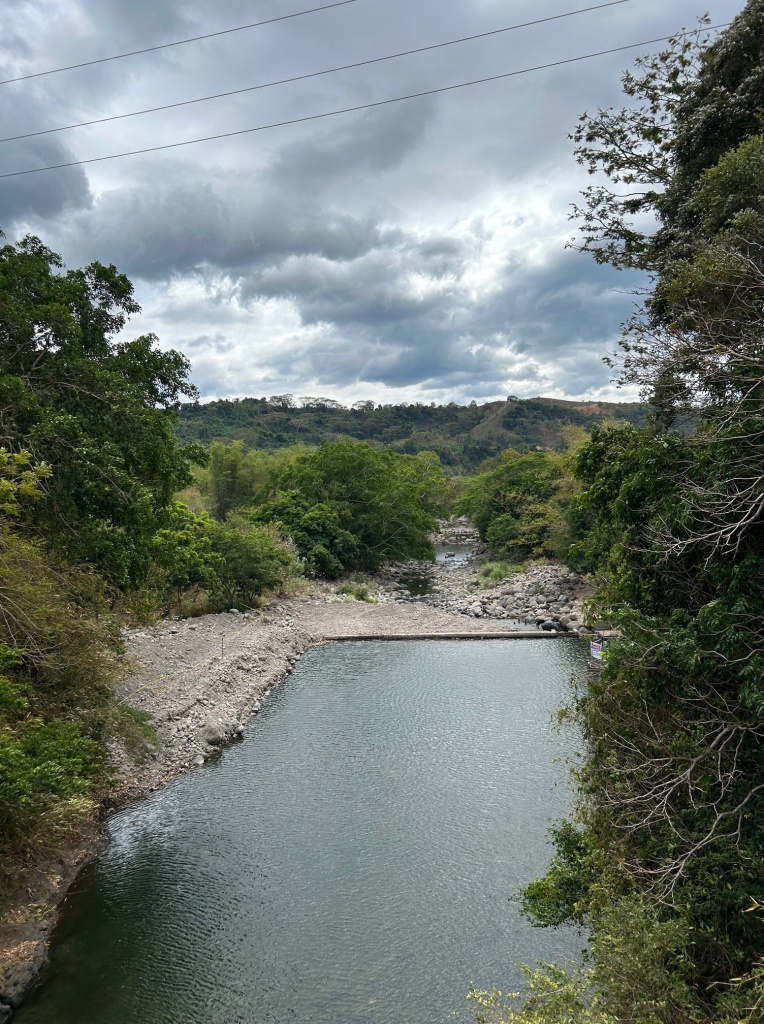
The bridge isn’t wide enough for cars, but a stream of motorcycles goes up and down every day. We never saw any of these back in the late 1980s!
